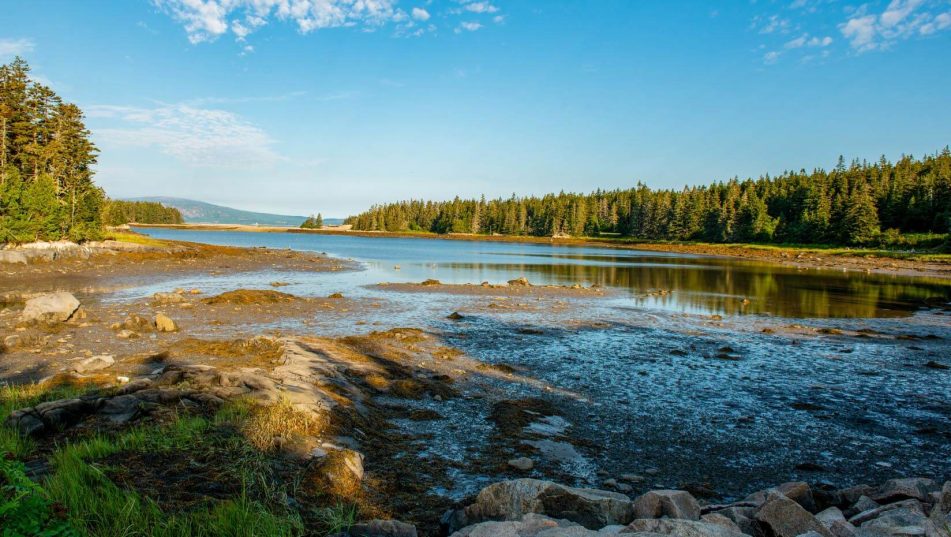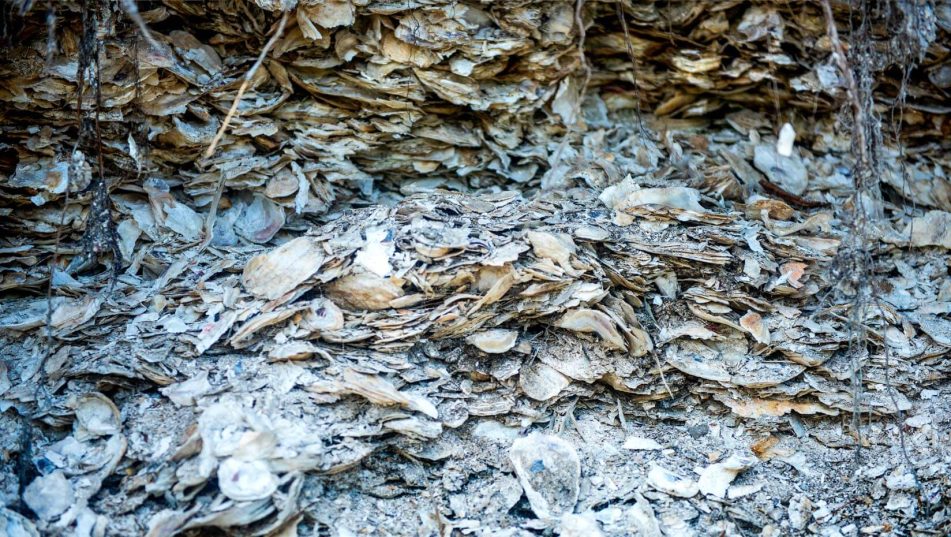4.10.24 [Just today in social media.]
Marcus Wolf
207.581.3721
marcus.wolf@maine.edu
Along the rocky shores of Acadia National Park are 24 known archaeological sites that preserve the history and heritage of Wabanaki people. Many of the sites house pottery sherds, tools, animal bones and other artifacts that showcase ancient Indigenous culture from a bygone age.
Sea level rise, flooding and storms are eroding these sacred and culturally significant places.
The National Park Service (NPS) is launching a new effort to protect Wabanaki archaeological sites in Acadia from climate change using Indigenous and western knowledge and recruited UMaine anthropologist Bonnie Newsom and archaeology Ph.D. students to help.

Using a “two-eyed seeing” approach, Newsom, her students and NPS will devise a co-stewardship strategy to manage and preserve Indigenous archaeological sites in Acadia with members of the Maliseet, Mi’kmaq, Penobscot and Passamaquoddy nations, all of which are part of the Wabanaki Confederacy. The five-year project, which builds on 15 years of collaboration between NPS and Indigenous communities, will involve consultation from tribal historic preservation officers, elders, natural resource caregivers, fluent language speakers and artisans.
One focus of the new work in Acadia involves protecting millennia-old shell heaps. These deposits of clam shells showcase the culture of the Indigenous people who created them, including what they ate and how they interacted with the environment and each other. The shell heaps, which protect artifacts from Maine’s acidic soil, are being washed away by storms, waves and rising ocean levels.
“Shell heaps are nonrenewable heritage spaces that preserve both cultural and paleoenvironmental information that is unique to the region. Once they are gone, they are gone for good, as is the information they contain,” said Newsom. “A partnership approach to management brings our best collective thinking to the issue and prepares archaeology students for professional futures that include community partnerships and climate change impacts.”

In addition to devising new management strategies, the project will involve creating new materials and curricula about Wabanaki archaeological sites in Acadia that place Indigenous knowledge and priorities at the forefront. It also will involve creating new documentation that incorporates Wabanaki language narratives, video and storytelling.
The project is part of several efforts to protect the historical and natural resources in Acadia National Park from climate change, funded by a $950,000 award through the Inflation Reduction Act. Out of the overall funding, $675,000 will be allocated to UMaine, which will support Ph.D. students, a citizen science pilot program and the Indigenous archaeology research and community engagement led by Newsom.
These efforts in Acadia are among 40 recently-funded climate resilience and restoration projects in hundreds of National Parks.
Visit the Acadia National Park website to learn more.
See the full article here.
Comments are invited and will be appreciated, especially if the reader finds any errors which I can correct.
five-ways-keep-your-child-safe-school-shootings
Please help promote STEM in your local schools.
The University of Maine is a public land-grant research university in Orono, Maine. It was established in 1865 as the land-grant college of Maine and is the flagship university of the University of Maine System. The University of Maine is one of only a few land, sea and space grant institutions in the nation. It is classified among “R2: Doctoral Universities – High research activity”.
With an enrollment of approximately 11,500 students, The University of Maine is the state’s largest college or university. The University of Maine’s athletic teams, nicknamed the Black Bears, are Maine’s only Division I athletics program. Maine’s men’s ice hockey team has won two national championships.
The University of Maine was founded in 1862 as a function of the Morrill Act, signed by President Abraham Lincoln. Established in 1865 as the Maine State College of Agriculture and the Mechanic Arts, the college opened on September 21, 1868 and changed its name to the University of Maine in 1897.
By 1871, curricula had been organized in Agriculture, Engineering, and electives. The Maine Agricultural and Forest Experiment Station was founded as a division of the university in 1887. Gradually the university developed the Colleges of Life Sciences and Agriculture (later to include the School of Forest Resources and the School of Human Development), Engineering and Science, and Arts and Sciences. In 1912 the Maine Cooperative Extension, which offers field educational programs for both adults and youths, was initiated. The School of Education was established in 1930 and received college status in 1958. The School of Business Administration was formed in 1958 and was granted college status in 1965. Women have been admitted into all curricula since 1872. The first master’s degree was conferred in 1881; the first doctor’s degree in 1960. Since 1923 there has been a separate graduate school.
Near the end of the 19th century, the university expanded its curriculum to place greater emphasis on liberal arts. As a result of this shift, faculty hired during the early 20th century included Caroline Colvin, chair of the history department and the nation’s first woman to head a major university department.
In 1906, The Senior Skull Honor Society was founded to “publicly recognize, formally reward, and continually promote outstanding leadership and scholarship, and exemplary citizenship within the University of Maine community.”
On April 16, 1925, 80 women met in Balentine Hall — faculty, alumnae, and undergraduate representatives — to plan a pledging of members to an inaugural honorary organization. This organization was called “The All Maine Women” because only those women closely connected with the University of Maine were elected as members. On April 22, 1925, the new members were inducted into the honor society.
When the University of Maine System was incorporated, in 1968, the school was renamed by the legislature over the objections of the faculty to the University of Maine at Orono. This was changed back to the University of Maine in 1986.


